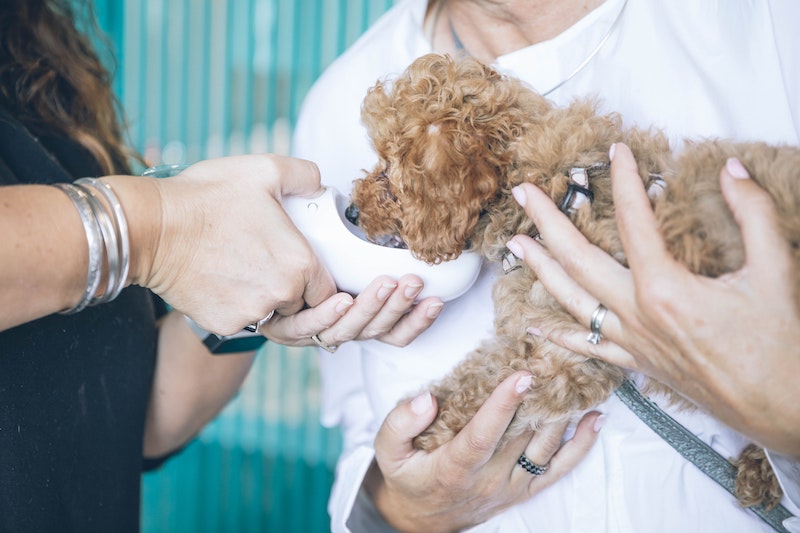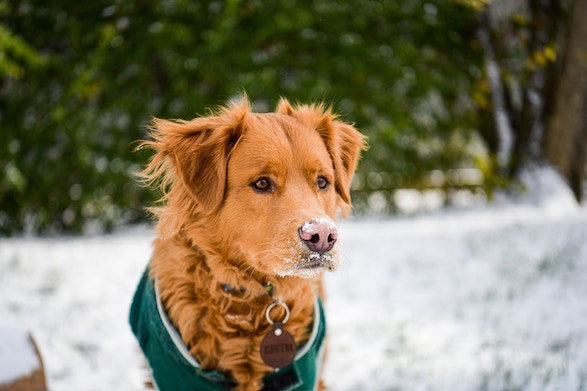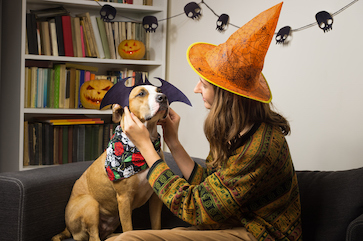Kansas City weather, as we all know, is unpredictable. During the summer months and throughout September, we know how important it is to keep a close eye on the heat index for both you and your dog. Heat stroke can happen to anyone or any dog, and it can happen fast. This time of year can be filled with a lot of amazing adventures and memories to make, so we are here to help give you the information and tips you need to be prepared for the heat while you do it.
Check the weather before you head out
July and August are the hottest months of the year for Kansas City. However, the temperatures throughout September can still be in the 90s. Consider downloading an app on your phone that you can keep track of the weather hour to hour in your area. If you are going outside, consider venturing out in the morning or towards nightfall.

Stay hydrated
Keep both you AND your dog hydrated while you are out and about. Drinking areas may not be as readily available for your dog, and for that reason, our trainers recommend bringing a portable water bowl along for the trip so you can share your water, or investing in a doggy-designed water bottle. We love the following designs:
- MalsiPree Dog Water Bottle
- The PupFlask Large Dog Water Bottle
- Gorilla Grip Leakproof Portable Dog Water Bottle
Sunscreen and grooming recommendations
We know grooming is an essential part of your pet’s health and care. Absolutely continue to trim longer hair on your dog, however, we recommend against shaving your dog. Just like the hair on our heads, the layers of dogs’ coats protect them from overheating and sunburn. If you need to shave your pet for medical or other reasons, be sure to limit their sun exposure and if they do need to be in the sun, make sure any sunscreen or insect repellent product you use on them is formulated specifically for animal use. Always test a small area first to ensure the product doesn’t cause an allergic reaction. Non-Toxic EBPP Dog Sunscreen can be great for skin, coat, nose, and ear protection.
Check the surface heat

It is easy for any surface such as asphalt, wood, sand, or even dirt to get hot quickly. Consider your dog’s paws on the ground similar to you walking barefoot. A general rule of thumb is if it’s too hot for you, it’s too hot for them. To do a quick check, place your hand on the surface, and if you can’t keep your hand on it for more than 10 seconds comfortably, it’s too hot. Always test the ground your dog is walking on, walk in the grass when you can, and don’t linger in the sun.
Find ways to keep cool
- Frozen treats
- Many dogs love ice cubes and frozen treats, both are great ways to keep cool. Many pet stores have frozen sections for doggy ice creams with fruity or peanut butter flavors your dog will love.
- Water features and dog-friendly stores
- Find dog-friendly parks that have water features for your pup and plenty of shade, or consider taking your dog to a dog-friendly store with plenty of AC to avoid the heat altogether.
- Reenergize
- You may find that after being outside, your dog may search for cold tile to lay on. Cooling pads are a great option made with a pressure-activated gel that cools when your pet applies pressure on it. Take them on the go as they stay chilled for hours and do not require electricity, water, or refrigeration.
Never leave your dog in the car
In just a few minutes, the inside temperature of your car can quickly reach 120 degrees, even with the windows cracked. The ASPCA has created this downloadable PDF that you can print out or save to your phone, or share as a reminder of the most important car safety tips.

Signs of heat stroke and what to do next
When it comes to the “risk of overheating,” there are definitely some breeds and body types you may have to watch a little more closely. Brachycephalic breeds, dogs with short noses or snouts such as the boxer, pug, and bulldog, are more prone to heat stroke. Other features that may cause your dog to be at a higher risk are being overweight, having a barrel/deep chest, pre-existing upper respiratory problems, or a thick fur coat. With these in mind, it is important to know regardless of breed, any dog can succumb to heat stroke. Signs you will want to look out for include:
- Heavy panting
- Excessive salivating
- Inability to relax, even when lying down
- Inability to stand up
- Brick red gum color
- Fast pulse and heart rate
If you think that your dog is overheating, immediately take their temperature rectally. If their temperature is above 105 degrees, begin to cool them down. You can do this quickly by using a water hose. Be sure the water is cool first before applying it to your dog. Recheck their temperature, and as soon as their temperature has come down to 103 degrees, take your dog to the veterinarian as quickly as possible. Heat stroke can cause organ and neurological dysfunction, and in some cases even death. If you want to be proactive on top of the safety management we have detailed above, we recommend checking out the Red Cross Dog and Cat Safety Course. This course will teach you how to differentiate between normal and abnormal vital signs, CPR, wound care, how to handle a seizure, and additional preventative care. With this safety overview, we hope you feel prepared for your next summer outing, and we know your fellow dog companion is thanking you!




